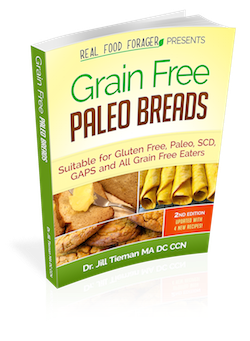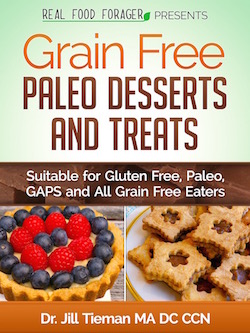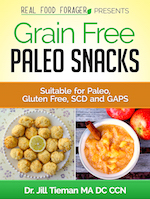When I was in my child-bearing years I experienced infertility problems. If I only knew then what I know now… Being a Nutritionist/Chiropractor, I thought I knew the correct nutritional steps I should take. The popular fix at that time was to take marine lipids and some other supplements. Little did I know that the low fat, low cholesterol, vegetarian diet I was following was wrecking havoc with my hormones.
Hindsight is 20/20. Now, I look back and wonder why I didn’t make the connection. I guess because I really believed that the diet I was following was the healthiest around. These days, my advice to patients always starts with their food — not the supplements — the food.
Infertility is in epidemic proportions in young people trying to conceive. As women age, fertility goes down and we are certainly seeing older women trying to conceive as well. However, according to the Center for Disease Control and Prevention, statistics for the years 2006 – 2010 show that the number of women ages 15-44 with impaired fecundity (impaired ability to get pregnant or carry a baby to term) is 6.7 million or 10.9%.
That’s a lot.
Furthermore, a CDC study analyzed data from the 2002 National Survey of Family Growth and found that 7.5% of all sexually experienced men younger than age 45 reported seeing a fertility doctor during their lifetime—that is 3.3–4.7 million men.
Many of these problems have nothing to do with age as they are in young people, nothing to do with structural or physical problems — everything to do with diet.
Learning from ancestral peoples
Dr. Weston Price studied many primitive and isolated tribes of people in his travels all over the world in the 1930’s. He found various cultures living in very different circumstances, yet they all had a common goal and common principles that they lived by. In the interests of survival, their overriding goal was to have healthy and strong babies that could survive their harsh environments.
They were able to achieve this without any medical interventions such as we have today, like antibiotics and vaccinations. As Dr. Price so eloquently said,
Life in all its fullness is mother nature obeyed.
Fat Soluble Mineral Activators
Dr. Price found that a common denominator amongst all the cultures he visited, was that they all had sacred foods that were specifically given to pregnant women and children. They also had a special diet for young couples that would soon have children. In this way they were able to do everything possible to ensure a healthy pregnancy, easy childbirth and a healthy baby.
These revered foods are rich in minerals and extremely high in what Dr, Price called fat soluble activators. Minerals such as calcium, magnesium, phosphorus, iron and iodine are important nutrients. These minerals have many necessary functions towards supporting optimal physical development. Dr. Price did not fully understand what these critical nutrients were when he first began his work. Recent science has uncovered the fact that these activators are actually the animal forms of vitamins A (retinol isomers), D (vitamin D3 and isomers) and K (vitamin K2).
In her writings and lecture, Sally likes to use the analogy of bricks and mortar,
If we compare the body to a house built of bricks and mortar, think of the minerals as the bricks and fat-soluble activators as the mortar. In other words, we can consume a certain diet of fantastically nutrient-dense foods, but the value of such a diet comes down to what is actually absorbed. Without fat-soluble activator nutrients— namely vitamins A, D3, and K2—our efforts to consume the “right” foods will be futile.
The work of Dr. Weston Price has clearly shown us that ancestral diets had these fat soluble mineral activators in the order of ten times the amounts we get from our diet today. Without this mortar all the minerals are lost or deposited in the soft tissues where they do not belong. For example, calcium deposits in the joints, in the kidneys as stones, in the heart vessels as atherosclerotic plaques.
Revered foods from the sea
Cod Liver Oil
In today’s nutrient poor Standard American Diet, cod liver oil provides a vital insurance policy. Until the Second World War, parents and health professionals understood that cod liver oil helped ensure optimal growth and development in children.
The traditional way of manufacturing cod liver oil was to dump the cod livers into barrels until the barrel was full. Then it was sealed and the livers left to ferment. After months of fermentation, the hepatic cell walls break open allowing the oil to float to the top of the barrel. The barrel was then opened and the oil carefully skimmed off.
Small Fatty Fish
Small fatty fish, both fresh and dried, such as, anchovies, sardines and whitebait, were eaten whole, with the bones, the heads and organs that provide so much nutrition. Today these small fish are found canned in olive oil and may be spread on crackers or tossed into salads.
Fish Roe
The natives of the Andes went to great lengths to carry dried fish roe from sea level back to their villages high in the mountains—sometimes hundreds of miles—to supply those of childbearing age with this super food. They knew that by eating this food, their babies would be healthy and strong. These nutrient dense eggs are rich in vitamins A, D, and K2 (Activator X) as well as zinc, iodine, and the fatty acid DHA (important for brain and eye development). According to a recent WAPF-funded analysis by UBE Laboratories, fish eggs contain 17,000 IU vitamin D per tablespoon!
Today we can enjoy this super food as caviar. The caviar process involves separating the fish eggs from the membrane by passing them through a sieve. The liquid is pressed off, and the eggs are mildly salted and sealed fresh in small tins or jars, or they may be canned and heat treated. Children love salmon roe. Check out my previous post about fish eggs and watch an adorable video of children at the Wise Traditions Conference chowing down!
Fresh roe is a little more challenging. You may be able to order some from your local fish store. On the east coast, shad roe may be obtained in the spring. There is a nice recipe for shad roe cakes in Nourishing Traditions.
Shellfish
Shellfish were also considered sacred foods. In one culture, Dr. Price found that pregnant woman would go out of their way to eat a certain type of crab. They would eat the entire crab, including the shell as it supplied needed nutrients.
Revered Foods On Land
Pastured eggs
Eggs are a sacred food. They have been highly prized in all traditional cultures since forever. The yolks carry most of the nutrition: fat soluble vitamins—A, D, E, K—as well as choline, a nutrient absolutely essential for the brain.
At pasture based farms, the chickens are moved to new pasture each day and they follow the cows and peck through the cow pies for insects. It is a self-sustaining operation and the animals are treated humanely and with dignity. These eggs are full of vitamin D because the chickens are given the opportunity to be in the sun. The vitamin A, E and K come from the grass and insects that they eat on pasture.
In China, eggs are a revered food and a pregnant woman will eat up to ten a day if she can afford it.
Pastured meat
There is a huge difference between grass fed cows and GMO corn/soy fed confinement cows. The fats profile is completely different. The saturated fats from grass fed animals contains beneficial fats with a large amount of the fat soluble mineral activators that we have been talking about. For instance, lard from pastured animals has the highest vitamin D content. Tallow from pastured cows has a large amount of CLA, a beneficial trans fat.
Butter
Misunderstood and maligned for the last few decades, butter is probably one of the healthiest fats you can eat. As studied and documented by Dr. Weston Price, many traditional cultures held butter up to be a sacred food.
Isolated Swiss villagers placed a bowl of butter on their church altars, set a wick in it, and let it burn throughout the year as a sign of divinity in the butter.
Butter made from the milk of properly raised grass fed cows is indeed sacred.
Traditional cultures put butter on their vegetables because they knew that the vitamins and minerals in vegetables need the activators in fat to be absorbed properly by the human body. I’ll repeat that. Vitamins and minerals need fat in order to be absorbed properly.
Organ Meats
In many cultures, these meats were the first to be eaten, as they are the epitome of the expression nutrient dense. Liver from poultry, fish, cow, lamb, game and pig is recognized the world over as a superfood. Liver is rich in iron and other minerals, choline, and B vitamins, especially B6 and B12. The liver from ruminant animals (cow, lamb and game) is the best food source of vitamin A; pig liver is loaded with vitamin D; liver from poultry contains about half the vitamin A as beef or lamb liver, but has a nice balance of vitamins A, D and K2.
Hate the taste of liver? Try soaking it in lemon juice for a few hours before cooking. This really helps to remove that yuck factor. Hate the texture? Process it into a pate with onions and bacon and you will be in heaven.
Towards the end of my pregnancy, I was absolutely craving liver. I made chopped liver pate and ate it every day. I am sure I was deficient in iron and this was my body telling me to get some. Back then, I did not have a source of grassfed animals (nor did I know about that) but I did the best I could with organic chicken livers.
If you really cannot handle organ meats, you can try dessicated liver capsules. But you must buy them from a reputable company. Here is where to get dessicated liver capsules.
Bone Marrow
Traditional people of all cultures ate bone marrow. The literal translation of bone marrow in Russian is “bone brains,” clearly indicating that its importance was long ago understood.
Lab tests show that 100 grams, approximately six and a half tablespoons, of bone marrow contains 677 IU vitamin A, 29 mcg vitamin K2, and high levels of nourishing fats (up to 45 percent saturated). Again, fat soluble mineral activators. Bone marrow is rich in sphingolipids, essential fats that protect cell membranes and that are critical components of the brain and nervous system.
An easy way to incorporate marrow into a meal is to simply infuse the marrow from within the bone right into a slow cooked sauce or stew. Marrow bones can also be roasted or boiled and the marrow can be fished out and eaten with a little sea salt, on crackers, or plain.
Listen to your elders
It is critical that we, as a modern culture, get back to the wisdom of the past. We are in the third generation of eating a diet consisting mainly of highly processed foods. We are also experiencing epidemics of children with adult diseases and adults with chronic diseases that shorten and reduce quality of life. We need to invest in our ancient dietary wisdom for the sake of our families. We need to make sacred foods more commonplace and available to ensure a healthy new generation.
Don’t accept the new normal. Your future and your children’s future depend on it.
You can find quality cod liver oil here.
Further Reading
- The Nourishing Traditions Book of Baby and Childcare by Sally Fallon Morell
- Ancient Dietary Wisdom for Tomorrow’s Children by Sally Fallon Morell
- Dietary Guidelines by the Weston A Price Foundation
- The recommended diet for pregnant and nursing mothers by the Weston A Price Foundation
Shared at: Small Footprint Friday, Hearth & Soul Hop, Real Food Wednesday, Mommy Club, Whole Foods Wednesday, Allergy Free Wednesday, Healthy 2Day, Party Wave Wednesday, Thank Your Body Thursday, Tasty Traditions













